Do Pet Birds Like to Cuddle? Insights on Avian Affection
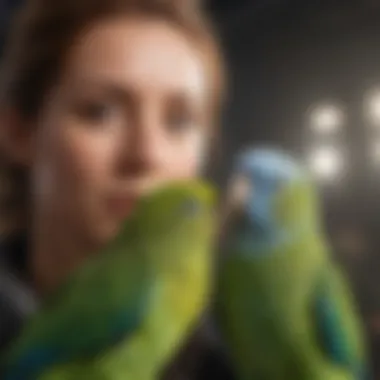
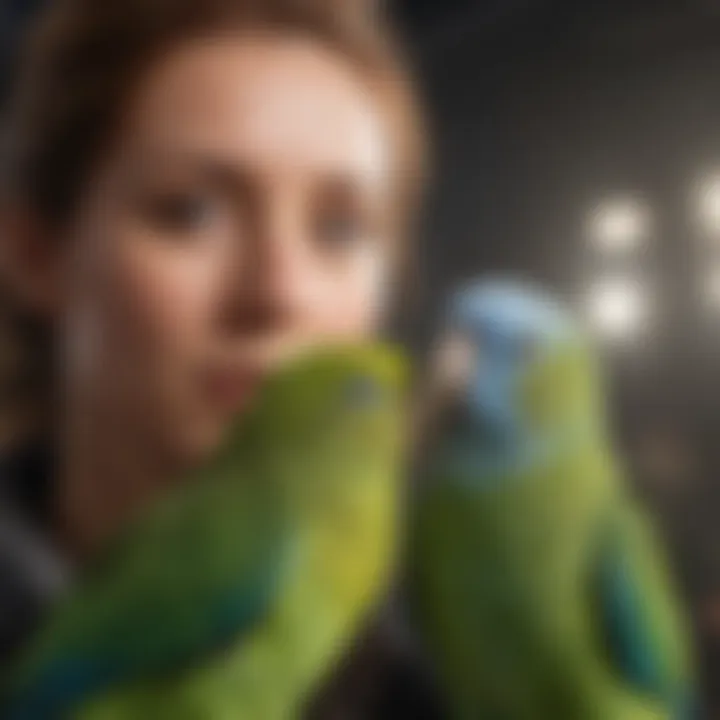
Intro
The interaction between humans and their pet birds often raises questions about emotional connections. One area of interest is whether pet birds enjoy cuddling. This article investigates the behavior of various bird species in relation to cuddling and the factors that influence these behaviors. It draws on avian psychology and owner experiences to determine how these animals express affection. Moreover, it discusses the benefits of cuddling for both birds and their owners, and offers practical tips for creating a nurturing environment.
Understanding individual temperament and the characteristics inherent to specific species plays a crucial role in forming these bonds. This exploration aims to provide an insightful perspective for pet bird owners, aspiring bird parents, and breeders alike.
Care Tips
Caring for a pet bird goes beyond feeding and housing. A comprehensive approach to care includes establishing daily routines, ensuring a suitable environment, maintaining hygiene, and being aware of seasonal requirements.
Daily Care Routines
Birds require consistent daily interactions to thrive. This involves providing fresh food and water, engaging in social activities, and allowing time outside of their cage for exercise. Some species may enjoy being held, while others prefer interacting from a distance. It is important to observe your bird's preferences to establish a routine that suits both parties.
Cage Setup and Maintenance
A well-maintained cage is vital for a bird's health. Cages should be spacious enough to facilitate movement and include perches, toys, and food dishes at different heights. Regularly check for wear and tear, and clean the cage to remove droppings and food remnants. The cage should reflect the specific needs of the bird species, ensuring they can enjoy vertical space and various textures.
Hygiene and Cleaning Practices
Hygiene is crucial. Wash food and water containers daily to prevent mold and bacteria growth. Regularly clean the cage and dispose of soiled bedding. Use safe cleaning agents, keeping in mind that volatile chemicals can harm birds.
Seasonal Care Adjustments
Birds can be sensitive to temperature changes. In colder months, ensure that their living environment is adequately heated. Conversely, during warm seasons, provide shade and cooling options. Monitor humidity levels, as birds are also susceptible to dehydration, especially in hotter climates.
Behavioral Insights
Understanding a bird's body language is essential for developing a strong bond. Positive reinforcement techniques can encourage interactions, making it easier for birds to express themselves.
Understanding Bird Body Language
Birds communicate through body language. Watch for signs such as puffed feathers, head bobbing, or beak grinding, which can indicate comfort or a desire for attention. Conversely, panting or rapid wing flapping might suggest stress. Recognizing these signals allows for better interactions.
Common Behavioral Issues and Solutions
Behavioral problems can arise if a bird feels neglected or stressed. Issues such as excessive screaming or feather plucking may occur. To address these, ensure regular social interactions and consider consulting an avian behaviorist if problems persist.
Positive Reinforcement Techniques
Using treats to reward favorable behavior encourages cuddling and interaction. Introduce this gradually, offering treats only for desired behavior to foster a trusting relationship.
Social Interaction Needs
Many bird species are social, requiring companionship to thrive. Enrich their environments by providing toys and opportunities for socialization, whether with other birds or humans.
Nutrition Guides
A balanced diet is critical for a bird's health and mood. Consider the unique dietary needs of different species when selecting food.
Essential Diet Components
In general, a good diet should include seeds, pellets, fresh fruits, and vegetables, providing the necessary vitamins and minerals. However, specific dietary needs differ among species, so research is vital.
Safe and Toxic Foods
Being aware of safe foods is crucial. Foods such as avocado and chocolate are toxic to birds. When introducing new foods, do so gradually and observe for any adverse reactions.
Supplements and Treats
Supplements may be necessary for certain species, particularly those with specific health concerns. Offering occasional treats, like cuttlebone or millet, can enhance their diet and satisfaction.
Feeding Strategies for Different Species
Budgerigars, cockatiels, and parrots each have unique dietary requirements. Understanding these can help owners provide the best nutrition tailored to their pets.
Wellness and Health
Staying vigilant about health is crucial. Regular checkups and awareness of illness symptoms can keep birds in good condition.
Routine Health Checkups
Regular veterinary checkups help monitor the overall health of your bird. Find an avian vet who specializes in bird care and make appointments regularly.


Identifying Symptoms of Illness
Look for signs like changes in singing, eating habits, or drooping wings. Early detection of illness can be essential in treatment and recovery.
Preventative Care and Vaccinations
Just as with other pets, vaccinations can help prevent diseases. Discuss with your veterinarian about which ones are recommended for your bird.
Mental and Emotional Well-being
Just like physical health, mental well-being is essential. Ensure your bird receives ample social interaction, as isolation can lead to stress and health issues.
Enriching Activities
Keeping a bird stimulated is key to its happiness and health. Activities should include toys, training, and mental challenges.
Toys and Playtime Ideas
Provide a variety of toys that your bird can interact with, such as swings, bells, and chewable items. Rotate toys regularly to maintain their interest.
Training and Tricks
Training birds can enhance their bond with you and provide mental stimulation. Start with simple commands or tricks and use treats as motivation.
Outdoor Activities and Interaction
Outdoor exposure is beneficial. Supervised time outside can offer new sights and sounds, enriching their experience.
DIY Projects for Mental Stimulation
Engage in DIY projects that provide mental and physical activities for your bird. Building foraging toys or other simple activities can stimulate their natural instincts.
Finale
In summary, understanding and fostering a positive relationship with pet birds requires knowledge about their behaviors, needs, and nutrition. Recognizing the nuances of each species plays a fundamental role in developing meaningful bonds. By prioritizing care, health, and enriching activities, owners can create an environment where pet birds can thrive emotionally and socially.
Understanding Avian Behavior
Understanding avian behavior is crucial for pet bird owners and aspiring bird parents. It helps in navigating the complex emotional landscape of our feathered companions. Birds are not simply pets; they are sentient beings with distinct personalities and social requirements. By learning about their behaviors, owners can foster a nurturing environment that leads to a more fulfilling relationship.
Behavior in birds is influenced by many factors, including species, socialization history, and individual temperament. Each bird has unique instincts that guide its interactions with humans and other birds. A deep dive into avian behavior allows us to appreciate these intricacies, providing insights into how we can best connect with our pets.
Recognizing the basic needs and social structures of birds can also lead to practical outcomes. For instance, creating an enriching habitat that suits their instinctual behaviors can help reduce stress and promote well-being.
Basic Social Structures of Birds
The social structures of birds are often complex and varied across species. Many birds are flock animals, relying on social interaction for safety, companionship, and breeding. Their innate behaviors often reflect these social structures, leading them to seek companionship from other birds or their human caretakers. For instance, parrots and cockatiels often thrive in social environments, showing a preference for proximity to others.
A lack of social interaction may lead to behavioral issues such as feather plucking or aggression. Understanding the social needs of your pet bird is essential. Each species has its unique way of interacting, ranging from playful antics to quiet companionship. Being aware of these needs allows for a more harmonious coexistence.
Instincts That Affect Affection
Instincts play a significant role in avian affection, affecting how birds express their comfort and bond with humans. Birds have natural instincts for establishing hierarchies, nesting, and forming bonds. Some species may show affection through preening or gentle nudging, while others might prefer to maintain distance. Understanding these instincts is key to interpreting your bird's behavior correctly.
Birds have a strong attachment to safety and predictability. If a bird feels threatened or uncomfortable, it may retreat instead of cuddling. Hence, recognizing triggers such as loud noises, changes in routines, or unfamiliar people can assist owners in creating a safe space. By fostering an environment that validates their instincts, owners can encourage affectionate behaviors in their birds.
Species-Specific Affection Levels
Understanding species-specific affection levels is crucial for any bird owner. Each type of pet bird exhibits different behaviors and responses towards humans, which directly influences their comfort with cuddling. The dynamics of affection are not uniform across all species. Therefore, recognizing these variations helps in fostering a suitable environment for each bird type. Additionally, understanding these differences can help manage expectations and improve the overall bond between owners and their avian companions.
Small Birds and Cuddling
Small birds, such as canaries and budgerigars, have nuances in their social behavior. Generally, they are more inclined to be playful rather than cuddly. Such birds often express affection through vocalizations and short interactions. They thrive in active environments full of toys and social stimuli. While individual temperament varies, it is essential to understand that small birds may not wish to be held tightly. Their cuddling preference may lean more towards gentle, brief contact.
It's pivotal for owners of small birds to respect their space while also encouraging healthy social interactions. Owners should learn to recognize when a small bird is comfortable and when it might feel threatened. Training can also promote a greater level of comfort and encourage positive social behaviors.
Medium-Sized Birds: Preferences and Behaviors
Medium-sized birds, like cockatiels and lovebirds, exhibit a higher potential for cuddling compared to their smaller counterparts. These birds often seek physical contact and tend to enjoy being close to their owners. They may prefer to snuggle or sit on the owner's shoulder. With proper socialization, many medium-sized birds display affection in the form of preening or gentle nuzzles.
Having a balanced environment is essential for these birds. They require mental stimulation through toys and regular interaction, which can help them feel secure. Owners must remember that even medium-sized birds can have distinct personalities that influence their cuddling behavior. Some might be very affectionate, while others could prefer maintaining some distance. Understanding these personality traits promotes a stronger bond.
Large Birds: Understanding Their Need for Space
Large birds, including macaws and cockatoos, present a complex nature when it comes to affection. These birds often have a strong personality and can be quite demanding of attention. However, they also require a considerable amount of personal space. Cuddling might involve being close, but many large birds will only tolerate a limited amount of physical contact.
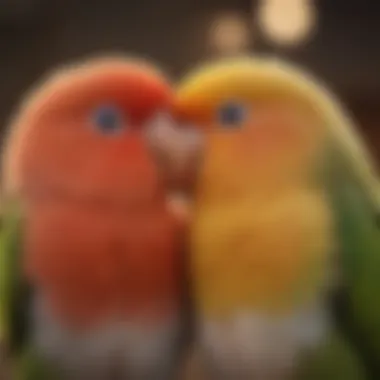
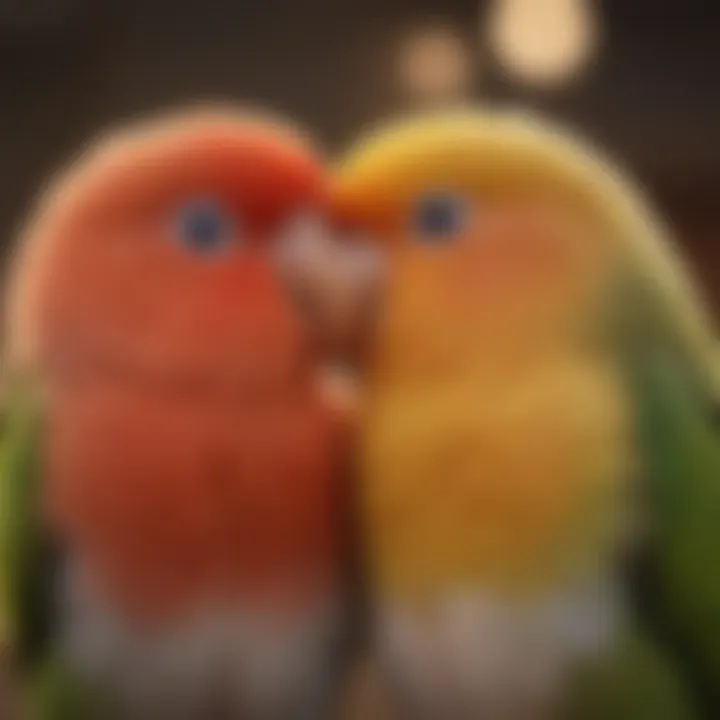
Training and social interactions are vital in helping large birds to feel secure. They can form deep connections with their owners but may not show this affection through traditional cuddling behaviors. Instead, large birds may express their feelings by following their owners around or engaging in playful antics. Respecting their need for space is crucial to ensuring they do not feel cornered or threatened.
Key Takeaway: The approach to cuddling should always be tailored to the specific species. Each bird type displays unique affection levels, and understanding these distinctions enhances the human-bird bond.
In summary, recognizing the differences in affection levels is fundamental for engaging with pet birds effectively. By tailoring interaction methods to the species, owners can create a more fulfilling relationship.
Factors Influencing Cuddling Behavior
Understanding the factors that influence cuddling behavior in pet birds is essential for bird owners and enthusiasts alike. These factors can significantly affect how comfortable a bird feels with closeness and intimacy with humans. Identifying these elements can guide owners in creating a nurturing environment and fostering affection. The nuances of socialization experiences, territorial instincts, and the bond formed with owners play pivotal roles in determining whether a bird is willing to engage in cuddling behavior.
Early Socialization Experiences
Birds, like many animals, benefit from socialization at a young age. The experiences they undergo during their formative months can resonate through their entire lives. Birds that are exposed to a variety of people, sounds, and environments typically exhibit more confident behaviors later on. Proper socialization can encourage birds to accept handling, including cuddling. Conversely, if a bird has limited interaction early on, it may develop fear or anxiety when approached by humans.
To enhance the likelihood of cuddling, owners should consider engaging with their birds gently and consistently from an early age. This might involve gentle handling, speaking softly, and allowing the bird to explore its surroundings. It's crucial to create positive associations with these interactions, so the bird learns that humans can bring comfort rather than stress.
Territoriality and Stress Responses
Many species of birds exhibit strong territorial instincts. They sometimes view their living space as their domain and may feel threatened by perceived intrusions. This behavior can hinder cuddling, as a bird may react defensively if it feels its space is being invaded. When a bird senses stress, its response might range from mild withdrawal to aggressive posturing.
Recognizing these stress responses is essential for successful bonding. It’s important to allow the bird to acclimatize to human interaction at its own pace. Owners should be mindful of their bird's comfort levels and avoid forcing close interactions or cuddling if the bird shows any signs of discomfort. Creating a calm environment can reduce stress and promote more affectionate behaviors.
Bonding with Owners
The bond that forms between birds and their owners is perhaps the most influential factor regarding cuddling behavior. When birds feel a strong attachment to their caregivers, they are often more willing to engage in physical closeness. This bond is intricately linked to time spent together, interactions, and the trust built over time.
Developing this bond requires patience and daily interactions. Providing birds with regular mental stimulation, such as toys or activities, can play a significant role in engaging them. Simple actions, like talking softly, hand-feeding healthy treats, or letting the bird spend time on the owner's shoulder, can foster trust and intimacy.
Ultimately, understanding the individual needs of each bird can lead to a more satisfying relationship, whether it includes cuddling or other forms of affection.
In summary, factors like early socialization experiences, awareness of territorial behaviors, and the bond created between owner and pet are critical in shaping cuddling behavior in birds. Owners who are attentive to these factors can create a positive environment that encourages affectionate interactions.
Positive Effects of Cuddling for Birds
Cuddling can have a range of positive effects on pet birds. Understanding these benefits is essential for bird owners who want to foster deeper connections with their pets. Cuddling is not merely an act of physical closeness; it can greatly influence a bird's emotional and psychological well-being. By exploring various effects of cuddling, we gain insight into how it contributes to both trust and happiness in avian companions.
Building Trust and Security
Cuddling with a bird serves as a foundation for building trust and security. Birds are naturally cautious creatures; they often take time to assess their surroundings and the beings within it. When a bird cuddles with its human, it signifies that it feels safe and secure in that environment. This behavior can be seen as the bird's way of accepting and valuing its owner.
- Building a bond: This interaction can strengthen the owner-bird bond. Over time, consistent cuddling creates a routine which enhances trust.`
- Reducing fear: The presence of a trusted human reduces the likelihood of stress reactions. Comfort during cuddling can alleviate feelings of vulnerability.
Hence, it is important for owners to engage in gentle and controlled cuddling. This practice promotes a strong emotional connection while offering a sense of safety for the bird.
Reducing Anxiety in Birds
Cuddling can play a significant role in reducing anxiety in pet birds. Birds often exhibit stress through various behaviors, such as excessive vocalization or feather plucking. When a bird receives physical affection, it can alleviate some of these anxieties. Being close to their owner during cuddling can provide them with a calming presence.
- Comfort in touch: The physical warmth and pressure during cuddling gives birds a sense of reassurance. This closeness can counteract feelings of isolation.
- Response to stressors: Owners should observe their birds and respond appropriately when they show signs of stress. Cuddling can be a soothing method during adverse situations, such as loud noises or unfamiliar visitors.
By incorporating cuddle time into a bird's routine, an owner may notice a significant reduction in anxiety over time. Regular, positive interactions help to establish a stable emotional environment.
Promoting Social Behavior
Cuddling not only builds trust but also encourages social behavior among birds. Birds are social animals; they thrive on interaction. Cuddling with their owners can promote a sense of belonging. This can introduce a variety of behavioral benefits that can enhance their overall disposition.
- Encouraging interaction: Engaging in regular cuddling can motivate birds to be more sociable with both humans and other pets. This action reinforces their comfort in social settings.
- Reducing aggression: Birds that feel secure and socially stimulated are less likely to exhibit aggressive behaviors. In contrast, those lacking sufficient interaction might display fear or aggression due to isolation.
Cuddling sends a clear message that they are part of the community. When both owners and birds engage in positive experiences, it leads to a more harmonious living environment.
Challenges with Cuddling
Cuddling is often seen as a sign of affection between pets and their owners. However, not all pet birds are inclined to cuddle, and there are several challenges that can arise when trying to foster this behavior. Understanding these challenges is pivotal for creating a nurturing and safe environment for birds. It allows owners to tailor their approach based on the unique needs of their avian companions, ensuring a more harmonious relationship.
Recognizing Avian Body Language
Understanding avian body language is one of the first steps in determining whether a bird enjoys cuddling. Birds communicate primarily through body position, vocalization, and feather positioning. A bird that is feeling secure and affectionate may exhibit relaxed posture, might flap wings gently, or tilt its head towards the owner. On the other hand, signs of discomfort include puffed feathers, a rigid stance, or rapid movements away from touch.
It is essential to watch for these indicators closely. For instance, a bird that gently nuzzles against its owner is likely seeking closeness. Conversely, if the bird backs away or gives a warning call, it is crucial to respect its boundaries. Ignoring these signals may not only hinder bonding but could also lead to stress or fear in the bird.
Potential for Aggression or Fear
While many birds can form strong bonds with their owners, there is also the potential for aggression or fear in some species. Birds are prey animals by nature, and many are naturally cautious of perceived threats, including human interaction. When an owner attempts cuddling too quickly or forcefully, it may be met with aggression or undesirable behavior such as biting.
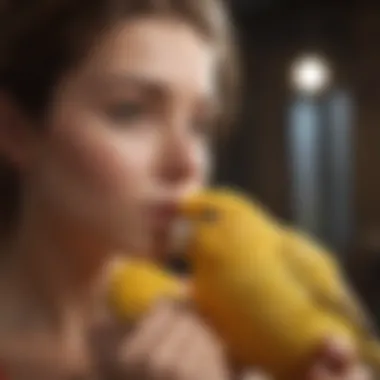
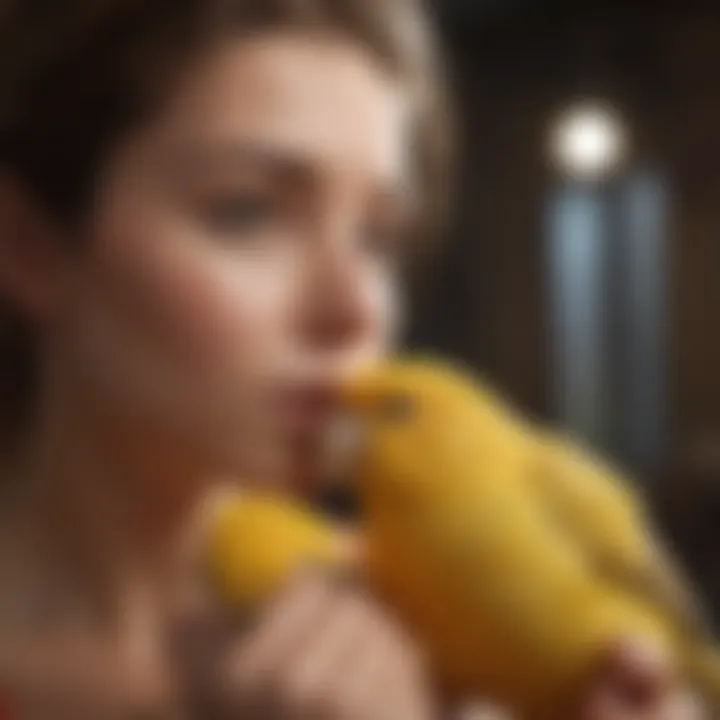
To mitigate aggression, it is important to engage the bird on its terms. This could mean allowing the bird to initiate contact rather than forcing cuddling. Also, familiarization through gradual, gentle interaction can build trust over time. Recognizing that each bird is different and that some may never enjoy cuddling is part of responsible pet ownership.
Handling Overstimulation
Overstimulation can also pose a challenge when it comes to cuddling. Birds have different thresholds for sensory overload, which can vary significantly based on species and individual temperament. What may be an enjoyable interaction for one bird can quickly become overwhelming for another. Signs of overstimulation include frantic movements, heavy breathing, or loud squawking.
To handle these situations effectively, owners should be mindful of the duration and intensity of their interactions. Short, frequent sessions are often better than prolonged contact, especially in the beginning stages of bonding. Additionally, offering periods of quiet time after engaging can help the bird regain its composure and reduce anxiety.
Practical Tips for Encouraging Cuddling
Understanding how to encourage cuddling behavior in pet birds is essential for creating a harmonious relationship. It can improve the bond between the owner and the bird, while also fostering the bird's general well-being. A strong connection may lead to improved trust, reducing anxiety, and promoting social behavior. Here, we offer practical tips that you can apply to encourage cuddling with your feathered friend.
Creating a Safe Environment
A nurturing space is crucial for a bird's comfort and willingness to cuddle. Birds are instinctively cautious. A secure environment reduces anxiety and builds confidence. You should avoid sudden movements or loud noises around the bird. An ideal setup includes a spacious cage with cozy perches and safe toys.
- Ensure the cage is located in a low-traffic area.
- Use soft lighting to prevent startling your bird.
- Avoid placing the cage near sources of stress, such as other pets.
Making an area outside the cage comfortable encourages your bird to explore. A soft blanket on a table or lap may invite your bird closer. Ensure that this space is also free from hazards like cables or small objects that they could ingest.
Using Positive Reinforcement Techniques
Positive reinforcement is key to encouraging cuddling behavior. Reward your bird for cooperative actions. This could be gentle scritches or verbal praise. Familiarization with touch can transform fear into trust.
- Start by allowing your bird to approach you at their own pace.
- Use healthy treats like sunflower seeds to reward closeness.
- Gradually increase the duration of interaction while rewarding your bird during this time.
Over time, consistency in your approach will help the bird associate you with positive experiences. This will lay the groundwork for deeper affection and a higher likelihood of cuddling.
Respecting Individual Preferences
Each bird has a unique personality. Some may enjoy cuddling quickly, while others require time and patience. It is crucial to observe and respect these preferences. Taking the time to understand your bird’s comfort level promotes a trusting relationship.
- Pay attention to body language. Signs of comfort include relaxed posture and willing interaction.
- Respect boundaries. If a bird appears distressed or retracts, allow them space.
- Provide options like toys or alternative activities if your bird is not inclined to cuddle at the moment.
Respecting individual tendencies fosters a long-term bond. It allows owners to see that affection can manifest in various forms, whether through play or companionship.
Always remember that patience and consistency are fundamental when fostering a close relationship with your pet bird.
Alternatives to Cuddling
Understanding alternatives to cuddling holds significant value for pet bird owners. While cuddling can enhance the bond between a bird and its human, not all birds display an affinity for such closeness. Recognizing different forms of interaction can fulfill a bird’s social and environmental needs. This section will discuss engaging in interactive play and providing enriching environments as practical options for those who wish to bond with their feathered companions.
Engaging in Interactive Play
Interactive play is an essential aspect of a positive relationship with pet birds. It allows birds to express themselves while strengthening the bond with their owners. Engaging with birds through play can create a stimulating atmosphere where they feel safe and loved, even without physical cuddling.
Birds enjoy a variety of interactive toys and activities. For instance, using foraging toys encourages birds to work for their food, which mirrors natural behavior. Other options include swinging, fetching balls, or simply letting them explore a safe area while you supervise. Some birds, like African Greys, enjoy games that challenge their intelligence, while others may prefer more rhythmic activities like rolling or flapping.
It is important to tailor these interactions to the bird's personality and species to keep them engaged. This not only satisfies their mental stimulation but also reduces anxiety and destructive behaviors. Moreover, these activities create moments of fun, where both the bird and owner can share joy without the need for physical closeness.
Providing Enriching Environments
A rich environment plays a critical role in a pet bird’s overall well-being. By focusing on habitat enrichment, owners can provide an appealing space that encourages natural behaviors and reduces stress. This strategy often compensates for the absence of cuddling, as it satisfies a bird’s instinctual needs.
Consider incorporating various elements into the bird's living space. Adding perches of different sizes, textures, and heights allows birds to exercise and explore vertically. Providing plant-based materials or branches for chewing and shredding can keep them entertained. Additionally, hanging toys and mirrors foster curiosity and playfulness.
Enrichment should be rotated regularly to maintain interest. This could mean introducing new toys or changing the layout of their space. All these components aim to create a comforting and engaging environment that allows birds to thrive without direct cuddling from their owners.
"An enriching environment not only encourages natural behaviors but also lessens the focus on physical interactions like cuddling."
By recognizing the significance of these alternatives, owners can better cater to their birds' needs. This knowledge fosters a more profound and understanding relationship, ensuring both parties feel happy and secure.
Finale
Understanding whether pet birds like to cuddle is essential for bird owners and enthusiasts alike. This topic is not just about the physical act of cuddling; it encompasses a wide range of factors that affect the bond between birds and their owners. Through our exploration, we have delved into the complexities of avian behavior, examined how various species respond to human interaction, and identified the key influences on their cuddling preferences.
Recap of Findings
The investigation has revealed several significant points regarding cuddling behavior:
- Species Differences: Not all birds exhibit the same levels of affection or prefer cuddling. Smaller birds like budgerigars may enjoy close contact more than larger species such as macaws, which often prefer personal space.
- Bonding: Building a bond through gradual interaction and respect for individual preferences is fundamental to positive experiences between pet birds and owners.
- Factors influencing cuddling: Elements such as early socialization, individual temperament, and responses to stress are integral to understanding a bird's willingness to cuddle.
These findings underscore the importance of recognizing diverse behaviors and needs within avian species. They point to the necessity for bird owners to adapt their handling and interaction styles accordingly.
The Importance of Understanding Individual Behavior
Every bird has a unique personality that reflects its species traits and individual background. Understanding these nuances can lead to better interactions and stronger bonds with pet birds. Affectionate behaviors like cuddling can lead to improved mental health for birds, as they often feel more secure when they trust their owners.
"Understanding individual behavior is critical for nurturing positive relationships with birds. Each bird has its own preferences, and it's essential to honor that for their well-being."
For further reading, consider resources on bird behavior at Britannica and Wikipedia.
Engaging in discussions on platforms like Reddit and joining communities on Facebook can also provide valuable insights and support for pet bird owners.















